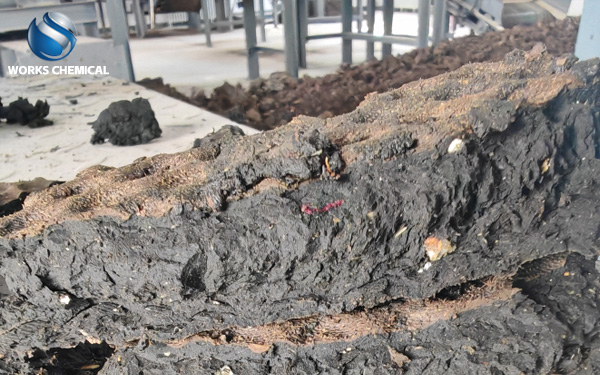
The sludge produced in the papermaking industry, due to its high water content, complex organic matter and difficult dewatering, has become a technical bottleneck restricting the green development of the industry. Sludge enhancer, as a new type of functional material, optimizes the properties of sludge through chemical, biological or physical actions and has become one of the key technologies for improving the efficiency of papermaking sludge treatment. This article starts from the mechanism of action of sludge enhancers and combines the characteristics of papermaking sludge to explore its application effect, economic value and future development direction in practical engineering.

I. Technical Challenges in Papermaking Sludge Treatment
Papermaking sludge mainly comes from the pulping, papermaking and wastewater treatment processes. Its components include fibers, fillers, colloidal substances and microbial metabolic products, etc. It has the following characteristics:
High moisture content: The moisture content of the primary sludge is usually over 95%, and the traditional mechanical dewatering efficiency is low.
Poor degradability: Complex organic substances such as lignin and hemicellulose lead to poor stability of sludge.
Pollution risk: Chlorine-containing organic compounds and heavy metals may cause secondary pollution.
Traditional treatment methods (such as landfill and incineration) have problems such as high cost and low resource utilization rate, and technological upgrading is urgently needed.
Ii. Mechanism of Action and Classification of Sludge Enhancers
Sludge enhancers enhance treatment efficiency by improving the particle structure of sludge, strengthening dewatering performance or promoting resource utilization. According to the mechanism of action, it can be classified into three categories:
Chemical conditioner
Inorganic salts (such as FeCl₃, Al₂(SO₄)₃) : They destroy the stability of colloids through electro-neutralization.
Organic high-molecular polymers (such as cationic polyacrylamide) : Form a floc framework to enhance the efficiency of mechanical dewatering.
Biological enzyme preparations
Complex organic matter is decomposed by cellulase, ligninase and other enzymes to reduce the viscosity of sludge and promote anaerobic digestion and gas production.
Compound enhancer:
Combining chemical conditioning with biological enzymatic hydrolysis technology to achieve multi-pathway synergistic enhancement.
Iii. Application Practice of Sludge Enhancers in Papermaking Sludge
Improve dehydration efficiency
A case of a certain paper mill shows that after using the sludge enhancer:
The sludge specific resistance (SRF) is reduced by 60% : Sludge particles aggregate to form a large-pore structure, and the permeability of the filtrate is significantly increased.
The moisture content was reduced from 82% to 58% : After plate and frame filtration, the volume of the mud cake decreased by 40%, and the transportation cost dropped by 35%.
2. Expansion of resource utilization
The sludge pretreated with sludge enhancer can achieve:
Fuel conversion: The calorific value is increased to 12 MJ/kg, replacing part of the coal.
Building materials chemical: As a cement admixture, the curing rate of heavy metals reaches 98%.
Iv. Analysis of Economic and Environmental Benefits
Cost savings
The cost of adding sludge enhancers is approximately 30 yuan per ton of sludge, but due to the improvement in dewatering efficiency, the comprehensive treatment cost has decreased by 50 to 80 yuan per ton.
Carbon emission reduction potential
The reduction of sludge volume and the energy substitution effect: Each ton of sludge treatment can reduce the emission of 0.2 tons of CO₂ equivalent.
Policy adaptability
It meets the target requirement of "sludge harmless disposal rate exceeding 90%" in the "14th Five-Year Plan for Urban Sewage Treatment and Resource Utilization Development".
Conclusion
The sludge enhancer, through the coupling of multiple technologies, provides an efficient solution for the reduction and resource utilization of papermaking sludge. In the future, it is necessary to enhance cooperation among industry, academia and research institutions, promote technological standardization and cost optimization, and facilitate the low-carbon transformation of the papermaking industry. With the tightening of environmental protection policies and the advancement of the "dual carbon" goals, the application prospects of sludge efficiency enhancers will be even broader.